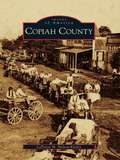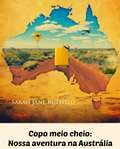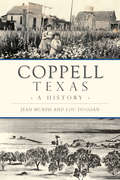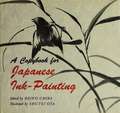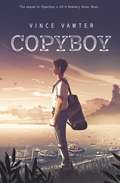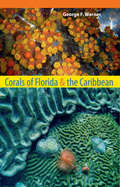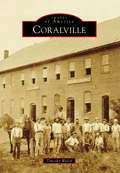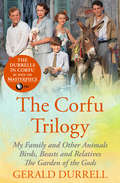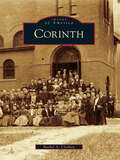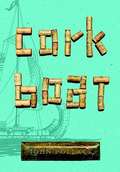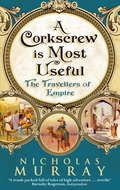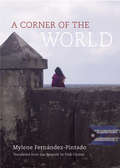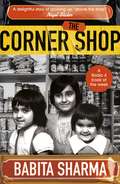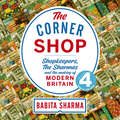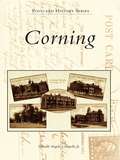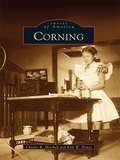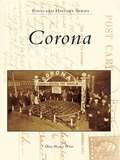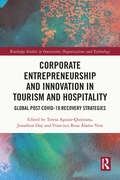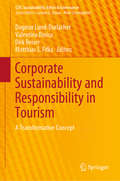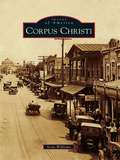- Table View
- List View
Copiah County (Images of America)
by LaTricia M. Nelson-EasleyNamed after a Native American word meaning "calling panther," Copiah County was organized after an agreement was reached with the Choctaw Indians in the Treaty of Doak's Stand in 1820. Located 20 miles from the state capital of Jackson, the county was organized in January 1823 and quickly became an agricultural and manufacturing namesake. Once known as the "Tomato Capital of the World," the county was the location of the largest Chautauqua assemblies in the South and the site of the founding of the Mississippi Parent Teacher Association. The extinct town of Brown's Wells once produced spring water that "healed" the rich and famous. Notable citizens from Copiah County include bluesman Robert Johnson; Maj. R. W. Millsaps, for whom Millsaps College was named; Burnita Shelton Matthews, the first female federal district court judge; Pat Harrison, a former representative and senator; Albert Gallatin Brown, a former governor; and Fannye Cook, an author and the first director of the Mississippi Museum of Natural Science.
Copo meio cheio: Nossa aventura na Austrália
by Márcia de Medeiros Souza Sarah Jane ButfieldCopo meio cheio: Nossa aventura na Austrália é a história de uma família britânica que toma uma das decisões mais difíceis de sua vida, emigrar para o interior da Austrália para viver o seu sonho. Por que essa decisão era tão difícel? Bom, a família é formada por vários núcleos, o que significava que alguns dos filhos iriam ficar no Reino Unido com os ex-parceiros. Após ter resistido a um complicado divórcio e inúmeras batalhas judiciais pela custódia dos filhos, Sarah Jane sabia que esta era a única chance deles de felicidade e que, como uma família, estavam tomando a escolha certa. Eles trabalharam duro e planejaram para que tudo desce certo e foi o que ocorreu, até que eventos que mudaram a vida deles começaram a testar as fundações dessa resistente famíia. Apenas quando eles pensavam que o pior já havia passado, a Mãe Natureza interveio e levou embora as raízes de sua nova vida durante as inundações de Brisbane em 2011. Este livro conta como essa mulher surpreendente e sua corajosa família lutaram para manter vivo o seu sonho e usaram toda a positividade disponível para ter novas esperanças e novos recomeços. A vida não existe sem seus desafios. Quantos eventos transformadores uma família pode suportar antes que tudo vá pelos ares? Descubra nesta inspiradora e tocante história real.
Coppell, Texas: A History (Brief History)
by Jean Murph Lou DugganCoppell history is rooted in peace and community. In 1843, Sam Houston met with ten native tribes along Grapevine Springs Creek to negotiate an accord to end fighting and allow trade and settlement in the area. When Dallas/Fort Worth International Airport opened in 1974, Coppell transformed from a farming hamlet into a thriving town with expanding economic opportunity. Through firsthand accounts with longtime residents and meticulous research, authors Jean Murph and Lou Duggan unfold the contemplative story of a complex and historic community.
A Copybook for Japanese Ink - Painting
by Shutei Ota Reiko ChibaThis book is designed for the amateur artist who is eager to find a new outlet for his talents as well as for the one who has already discovered the enchantingworld of Japanese ink-painting. It is, quite frankly, a copybook, and it does not pretend to be anything else. As editor Reiko Chiba says of the paintings in the book, "These basic inspirations are to be individually altered and improved." The paintings are the work of Shutei Ota, an artist who has had a long career of introducing Japanese ink-painting to Westerners. As a teacher, she has found the language barrier to be no handicap. She teaches by showing) by example, and by holding the hands of her students-beginning immediately with strokes and foregoing preliminary sketches. "Paint now" is her philosophy. She likes to think of her paintings as written compositions. Each stroke is a sentence, and each sentence builds up to a complete message or picture. In this book, examples graded from easy to difficult are given. Westerners will no doubt make practical use of the art to create place cards, greeting cards, Christmas cards, and the like for personal use. Beyond this, of course, the study of Japanese ink painting will lead to better understanding of the discipline of Oriental arts in general.
Copyboy
by Vince Vawter Alessia TrunfioThe sequel to the Newbery Honor-winning novel Paperboy and a Fall 2018 Junior Library Guild selection Victor Vollmer isn't a paperboy anymore. He's a copyboy now, but his duties at the newspaper get interrupted by a last request from Mr. Spiro, the old man who became Victor's mentor and helped him take on his stutter in the beloved novel Paperboy, a Newbery Honor Book. Victor takes off on a journey that sends him hundreds of miles from home--toward the teeth of a gathering storm. Confronted by an unfamiliar and threatening world, he meets a girl who is strong, smart, and bold like no one he's known before, and together they venture to the place where river meets sea. When they wind up racing to evade a hurricane, Victor finds out what the fates have in store for him.
Corals of Florida and the Caribbean
by George F. WarnerPresenting a stunning array of beauty and biodiversity, the coral reefs of Florida and the Caribbean are part playground, part research lab for the thousands of tourists, divers, and marine scientists who visit them every year. Documenting the wide array of corals at home in the warm waters of the Caribbean, George Warner's Corals of Florida and the Caribbean provides an easy-to-use (and carry) guidebook that is both scientifically accurate and reader friendly.Warner provides an exhaustive identification guide that will enrich any novice's vacation dive or an expert's return to the reefs. Written for the amateur naturalist, this handbook will travel well throughout the Caribbean, from Florida south to Belize, east to Tobago, and all points in between.Beyond documenting the wide variety of corals found in the Caribbean, Warner also outlines their biology, from the way they grow to their reproductive habits, while examining major threats to the reefs including hurricanes, pollution, and global warming. With over 150 color photos, most taken by the author himself, as well as detailed descriptions, Corals of Florida and the Caribbean makes identifying and learning about corals hassle free--on the boat, at home, or in the classroom.
Coralville
by Timothy WalchAlthough Coralville is a lot like other small American cities, it is unique as the only community of that name in the United States. Located on the Iowa River, the name refers to the ancient coral reefs that are its geological bedrock. The river has always been a key aspect of Coralville's history, along with its proximity to Iowa City, the first capital of the Territory of Iowa and the home of the University of Iowa. Incorporated as a city in 1873, Coralville had few residents until the 1960s, when dynamic commercial and residential development brought substantial growth to the area. Today, Coralville is a city of industry, commerce, and hospitality. It is not surprising, therefore, that "Coralville Pride" is the city motto.
The Corfu Trilogy: My Family and Other Animals; Birds, Beasts and Relatives; and The Garden of the Gods (The Corfu Trilogy #3)
by Gerald DurrellNational Bestseller: The complete trilogy that inspired Masterpiece production The Durrells in Corfu in one volume. The tales of a naturalist and his family, who left England for the Greek island of Corfu—where they interacted with fascinating locals of both human and animal varieties—these memoirs have become beloved bestsellers and inspired the delightful series that aired on PBS television. Included in this three-book collection are: My Family and Other Animals: Ten-year-old Gerald Durrell arrives on sun-drenched Corfu with this family and pursues his interest in natural history, making friends with the island&’s fauna—from toads and tortoises to scorpions and geckos—while reveling in the joyous chaos of growing up in an unconventional household. Birds, Beasts and Relatives: Written after a boyhood spent studying zoology, this memoir is part nature guide, part coming-of-age tale, and all charmingly funny memoir. The Garden of the Gods: In the conclusion of the trilogy, Durrell shares more tales of wild animals and his even wilder family, including his mother, Louisa, and his siblings Lawrence, Leslie, and Margo, in the years before World War II. &“[Durrell&’s] books have an unfailing charm. . . . It is a tribute to his skill that one never tires of his accounts&” (Chicago Tribune). This ebook features an illustrated biography of Gerald Durrell including rare photos from the author&’s estate.
Corinth (Images of America)
by Rachel A. ClothierCorinth's name, selected from the Bible, was chosen when the township was first incorporated in 1818. Situated perfectly to benefit from the surrounding natural resources, Corinth has a long history as a mill town, processing timber, wool, and grains using the power of the Hudson River. Located at the northern edge of Saratoga County, Corinth has been both a rural agricultural community and an industrial center. It is home to several churches, community organizations, and businesses, as well as one of International Paper's largest mills, which used the Hudson for both transportation and energy generation. Within Corinth, readers will discover the area's past through images of mill workers, schoolchildren, farmers, shopkeepers, and other residents, as well as the homes and businesses they built.
Cork Boat
by John Pollack165,321 corks1 boatMost people have childhood dreams; few ever pursue them. At the age of 34, John Pollack quit a prestigious speechwriting job on Capitol Hill to pursue an idea he had harbored since the age of six: to build a boat out of wine corks and take it on an epic journey.In Cork Boat, Pollack tells the charming and uplifting story of this unlikely adventure. Overcoming one obstacle after another, he convinces skeptical bartenders to save corks, corrals a brilliant but disorganized partner, and cajoles more than a hundred volunteers to help build the boat, many until their fingers bleed. Hired as a speechwriter for President Clinton midway through construction, Pollack soon has the White House saving corks, too. Ultimately, he and his crew set sail down the Douro River in Portugal, where the boat becomes a national sensation. Written with unusual grace and disarming humor, Cork Boat is a buoyant tale of camaraderie, determination, and the power of imagination.
A Corkscrew is Most Useful: The Travellers of Empire
by Nicholas MurrayIn the early 19th century there was a huge surge forward in travel of all kinds. Queen Victoria's accession in 1837 came barely a year after John Murray's first guidebook was published. Then in 1838 Bradshaw's famous portable railway timetable appeared. In 1841 Thomas Cook, the world's first travel agent, organised its first tour (from London to Leicester and back by train). The age of mass tourism had arrived. Side by side with it another phenomenom began to develop: exploration to wilder shores and uncharted lands. This is the focus of Nicholas Murray's fascinating book which draws upon the extraordinary stories of Livingstone's journey across Africa; Burton and Speke reaching Lake Tanganyika; John Stuart crossing Australia from south to north; Livingstone reaching the Zambezi; Richard Burton's travels across Arabia, and countless others' extraordinary and brave expeditions.
A Corkscrew Is Most Useful: The Travellers of Empire
by Nicholas MurrayIn the early 19th century there was a huge surge forward in travel of all kinds. Queen Victoria's accession in 1837 came barely a year after John Murray's first guidebook was published. Then in 1838 Bradshaw's famous portable railway timetable appeared. In 1841 Thomas Cook, the world's first travel agent, organised its first tour (from London to Leicester and back by train). The age of mass tourism had arrived. Side by side with it another phenomenom began to develop: exploration to wilder shores and uncharted lands. This is the focus of Nicholas Murray's fascinating book which draws upon the extraordinary stories of Livingstone's journey across Africa; Burton and Speke reaching Lake Tanganyika; John Stuart crossing Australia from south to north; Livingstone reaching the Zambezi; Richard Burton's travels across Arabia, and countless others' extraordinary and brave expeditions.
A Corner of the World
by Dick Cluster Mylene Fernández Pintado"Mylene Fernandez offers us a magnificent gift. Her story of lost love and the difficult pursuit of literature is at the same time an X-ray of life in Havana, set in a present where glimpses of the future have not yet arrived."-Leonardo Padura, author of The Man Who Loved Dogs and the Mario Conde novels of HavanaIn contemporary Havana, "Do I stay or do I go?" is always the question, and love doesn't necessarily conquer all.A cautious, reserved professor of Spanish Literature, Marian has no idea that her quiet life is about to be turned upside down. When she's asked to review the work of a young, ambitious first-time novelist, she meets Daniel, and their love affair leads her to question both the choices she's made so far in her life and the opportunities she might yet still have.Theirs is the story of an intense and impossible love, set in today's Havana, a city where there can be no plans, where chance is the order of the day and a fierce sense of loyalty and pride coexists with the desire to live beyond the island's isolation."The fresh panorama of Cuban society today is painted without taboos or constraints, with a faith in human possibilities, and above all with a courage that stems from what is most legitimate and durable in ourselves."-Nancy Morejón, author of Looking Within: Selected Poems and Piedra Pulida"A Corner of the World is about desires and dreams, and, of course, about love."-Achy Obejas, author of Days of Awe and Ruins"Like the best of Truman Capote, another master of the short novel, Mylene Fernández gives us a cast of unforgettable characters: contradictory, complex, and human."-Fernando Pérez, director of Suite Habana, Life Is to Whistle, and Madagascar"To read this book is to encounter one of the best and most intimate works of Cuban literature of the 21st century."-Mabel Cuesta, author of Cuba post-soviética: un cuerpo narrado en clave de mujer"A sad, erotic, tender, and sometimes ironic tale of passion and desertion. ... the city becomes a co-protagonist, a confidante, a point of departure and return, and of waiting."--Senel Paz, novelist and screenwriter of Strawberry and Chocolate, Things I Left in Havana, and In the Sky with Diamondsd. It's for readers curious about the interior adventures of their fellow human beings, adventures that come with literary pleasures and an alchemy of fiction and life."--Senel Paz, novelist and screen writer (Strawberry and Chocolate, Waiting List, Things I Left in Havana, and In the Sky with Diamonds)Mylene Fernández-Pintado's novels have won the Italo Calvino Prize and Cuba's Critics' Award. She currently lives between Havana and Lugano, Switzerland. This is the first of her works to be translated into English.
The Corner Shop: A BBC 2 Between the Covers Book Club Pick
by Babita SharmaA BBC RADIO 4 BOOK OF THE WEEK'Nuanced, human and engaging' Nikesh Shukla, Observer'Full of life, characters, gossip and all the richness of the local community' Sir David Jason'A delightful story of growing up "above the shop"' Nigel Slater, Observer'Cleverly links her own memories of shop-bound life with the last 50 years of British history' Spectator'I come from a hidden world: I am the daughter of shopkeepers. I've seen you on a Sunday morning, nipping out to get a pint of milk or to grab a newspaper. I came to know a lot about you; whether your politics leaned to the right or left, whether you were gay or straight, and whether you were plagued by cash-flow problems or had enough disposable income to indulge your penchant for Cadbury's Creme Eggs.'Babita Sharma was raised in a corner shop in Reading, and over the counter watched a changing world, from the clientele to the products to the politics of the day. Along with the skills to mop a floor perfectly and stack a shelf, she gained a unique insight into a shifting landscape - and an institution that, despite the creep of supermarkets, online shopping and delivery, has found a way to evolve and survive - and is now once again keeping us all going.From the general stores of the first half of the 20th century (one of which was run by the father of a certain Margaret Thatcher), to the reimagined corner shops run by immigrants from India, East Africa and Eastern Europe from the 60s to the noughties, the corner shop has shaped the way we shop, the way we eat, and the way we understand ourselves. WINNER OF THE BUSINESS BOOK AWARD FOR AN EXCEPTIONAL BOOK THAT PROMOTES DIVERSITY'A triumph' Radio Times'A compelling, full selection box of a story' Sanjeev Kohli'One of the best books I've read on the immigrant experience in this country' Daily Mail'I loved it cover to cover' Angela Clutton, author of The Vinegar Cupboard
The Corner Shop: A BBC 2 Between the Covers Book Club Pick
by Babita SharmaA BBC RADIO 4 BOOK OF THE WEEKWINNER OF THE BUSINESS BOOK AWARD FOR AN EXCEPTIONAL BOOK THAT PROMOTES DIVERSITY'Nuanced, human and engaging' Nikesh Shukla, Observer'Full of life, characters, gossip and all the richness of the local community' Sir David Jason'A delightful story of growing up "above the shop"' Nigel Slater, Observer'Cleverly links her own memories of shop-bound life with the last 50 years of British history' Spectator'I come from a hidden world: I am the daughter of shopkeepers. I've seen you on a Sunday morning, nipping out to get a pint of milk or to grab a newspaper. I came to know a lot about you; whether your politics leaned to the right or left, whether you were gay or straight, and whether you were plagued by cash-flow problems or had enough disposable income to indulge your penchant for Cadbury's Crème Eggs.'Babita Sharma was raised in a corner shop in Reading, and over the counter watched a changing world, from the clientele to the products to the politics of the day. Along with the skills to mop a floor perfectly and stack a shelf, she gained a unique insight into a shifting landscape - and an institution that, despite the creep of supermarkets, online shopping and delivery, has found a way to evolve and survive. The Corner Shop is the remarkable human story of these little institutions that have changed the course of our history.From the general stores of the first half of the 20th century (one of which was run by the father of a certain Margaret Thatcher), to the reimagined corner shops run by immigrants from India, East Africa and Eastern Europe from the 60s to the noughties, the corner shop has shaped the way we shop, the way we eat, and the way we understand ourselves. 'A triumph' Radio Times'A compelling, full selection box of a story' Sanjeev Kohli'One of the best books I've read on the immigrant experience in this country' Daily Mail'I loved it cover to cover' Angela Clutton, author of The Vinegar Cupboard(P)2019 Hodder & Stoughton Limited
The Corner Shop: A BBC 2 Between the Covers Book Club Pick
by Babita SharmaA BBC RADIO 4 BOOK OF THE WEEK'Nuanced, human and engaging' Nikesh Shukla, Observer'Full of life, characters, gossip and all the richness of the local community' Sir David Jason'A delightful story of growing up "above the shop"' Nigel Slater, Observer'Cleverly links her own memories of shop-bound life with the last 50 years of British history' Spectator'I come from a hidden world: I am the daughter of shopkeepers. I've seen you on a Sunday morning, nipping out to get a pint of milk or to grab a newspaper. I came to know a lot about you; whether your politics leaned to the right or left, whether you were gay or straight, and whether you were plagued by cash-flow problems or had enough disposable income to indulge your penchant for Cadbury's Creme Eggs.'Babita Sharma was raised in a corner shop in Reading, and over the counter watched a changing world, from the clientele to the products to the politics of the day. Along with the skills to mop a floor perfectly and stack a shelf, she gained a unique insight into a shifting landscape - and an institution that, despite the creep of supermarkets, online shopping and delivery, has found a way to evolve and survive - and is now once again keeping us all going.From the general stores of the first half of the 20th century (one of which was run by the father of a certain Margaret Thatcher), to the reimagined corner shops run by immigrants from India, East Africa and Eastern Europe from the 60s to the noughties, the corner shop has shaped the way we shop, the way we eat, and the way we understand ourselves. WINNER OF THE BUSINESS BOOK AWARD FOR AN EXCEPTIONAL BOOK THAT PROMOTES DIVERSITY'A triumph' Radio Times'A compelling, full selection box of a story' Sanjeev Kohli'One of the best books I've read on the immigrant experience in this country' Daily Mail'I loved it cover to cover' Angela Clutton, author of The Vinegar Cupboard
Corning
by Donald Angelo Carapella Jr.In the 1830s, when a feeder branch of the Erie Canal linked up with the Cheumung River, Corning first became connected to the rest of the world. By the 1880s, Corning had become a railroad town with trains going in all directions. Industrial growth in the 1890s led to the rise of businesses and factories, such as Corning Glass Works. Because Corning produced so much glass, it became known as the crystal city and grew into a tourist destination. A town with many accomplishments, Corning was once home to a minor-league baseball team and is the birthplace of Margaret Sanger, a birth control activist who founded the American Birth Control League, which became Planned Parenthood. From the 1890s until the 1960s, the growth of the community's businesses, parks, churches, and recreation were captured in postcards, many never published before.
Corning
by Kirk W. House Charles R. MitchellLenses for railroad lanterns, cut glass for the White House table, Thomas Edison's first light bulb-the glass for all of these was made in Corning, the glass capital of America, the Crystal City. From 1880 to World War I, newfound wealth sparked a spending and building boom that shaped the city. Corning recaptures the city's gilded age, the boom days when tax-free fortunes could be made-and lost-overnight. Vintage photographs show elephants and buffalo parading down Market Street, the Drake family giving recitals on its home pipe organ, churches and public buildings rising, carriages giving way to motorcars, and huge summer homes springing up on the Finger Lakes.
Corona: The Early Years (Images of America)
by Jason D. Antos Burt Young Constantine E. TheodosiouNestled between old Newtown (today's Elmhurst) and the village of Flushing in the borough of Queens lies Corona. Blessed with an enchanting landscape, the area attracted development as early as 1854, when the West Flushing Land Company sought to create a suburban residential neighborhood in its midst. For Corona's cherished way of life, represented by Colonial-era farms, dirt roads, and gaslight streetlamps, this marked a distinct break from the past. Developer Benjamin Hitchcock's novel installment-plan system had helped place Corona on the map for good by 1870, laying down a historical precedent for later communities like Forest Hills and Jackson Heights to take shape. Before Mets baseball and the US Open were fixtures on the local scene, New Yorkers flocked to the National Race Course, one of the first such complexes in the entire country, for an exciting day at the races. Meanwhile, in its Corona-based factory, the Tiffany Glass Company forged distinctive lamps and glassware that in time would become world famous.
Corona
by Mary Bryner WinnSeveral times in the late 20th century, Corona was cited as the fastest-growing city in California, doubling and tripling its former sleepy-town size of around 25,000 in the 1970s to 150,000 in a matter of just decades. Corona has come a long way from its former offshoot identity as South Riverside in the late 19th century. Incorporated as Corona in 1896, itsurvived as a dry-farming community until the arrival of citrus crops. Its status as a way station for travelers between Los Angeles and the outlying desert communities was dramatically altered in the mid-1910s when it became an internationally recognized road-racing draw for the likes of Barney Oldfield and other great speedsters of the day. As abedroom community today for workers in Orange and Los Angeles Counties, it is virtually a prototype of Southern California suburban growth.
Coronado's Children: Tales of Lost Mines and Buried Treasures of the Southwest (Barker Texas History Center Series)
by J. Frank Dobie&“This is the best work ever written on hidden treasure, and one of the most fascinating books on any subject to come out of Texas.&” —Basic Texas Books Written in 1930, Coronado&’s Children was one of J. Frank Dobie&’s first books, and the one that helped gain him national prominence as a folklorist. In it, he recounts the tales and legends of those hardy souls who searched for buried treasure in the Southwest following in the footsteps of that earlier gold seeker, the Spaniard Coronado. &“These people,&” Dobie writes in his introduction, &“no matter what language they speak, are truly Coronado&’s inheritors . . . I have called them Coronado&’s children. They follow Spanish trails, buffalo trails, cow trails, they dig where there are no trails; but oftener than they dig or prospect they just sit and tell stories of lost mines, of buried bullion by the jack load . . .&” This is the tale-spinning Dobie at his best, dealing with subjects as irresistible as ghost stories and haunted houses. &“As entrancing a volume as one is likely to pick up in a month of Sundays.&” —The New York Times &“Dobie has discovered for us a native Arabian Night.&” —Chicago Evening Post
Coronado's Children: Tales of Lost Mines and Buried Treasures of the Southwest (Barker Texas History Center Series)
by J. Frank DobieWritten in 1930, Coronado's Children was one of J. Frank Dobie's first books, and the one that helped gain him national prominence as a folklorist. In it, he recounts the tales and legends of those hardy souls who searched for buried treasure in the Southwest following in the footsteps of that earlier gold seeker, the Spaniard Coronado. "These people," Dobie writes in his introduction, "no matter what language they speak, are truly Coronado's inheritors. . . . l have called them Coronado's children. They follow Spanish trails, buffalo trails, cow trails, they dig where there are no trails; but oftener than they dig or prospect they just sit and tell stories of lost mines, of buried bullion by the jack load. . . " This is the tale-spinning Dobie at his best, dealing with subjects as irresistible as ghost stories and haunted houses.
Corporate Entrepreneurship and Innovation in Tourism and Hospitality: Global Post COVID-19 Recovery Strategies (Routledge Studies in Innovation, Organizations and Technology)
by Jonathon Day Teresa Aguiar-Quintana Francisca Rosa Álamo VeraThe dynamic characteristic of the tourism and hospitality industry under the influence of micro and macro environment factors requires future professionals to be equipped with appropriate skills and competencies to deal with such factors in real life practices. In this book, scholars and industry experts analyse case studies related to real-world scenarios to expand the body of knowledge, inspiring future research and developing the field.The Editors have compiled a compelling set of case studies covering topics centred around corporate entrepreneurship, including innovation, marketing and digital marketing, crisis management, quality development, product development and sustainability with a particular emphasis on post-Covid-19 recovery. The case studies included cover five regions, Europe, Africa, the Americas, Australia and Asia, offering enriching and diverse perspectives.This unique collection will be a valuable resource for scholars and upper-level students across corporate entrepreneurship and innovation, as well as those researching and studying n the tourism and hospitality fields.
Corporate Sustainability and Responsibility in Tourism: A Transformative Concept (CSR, Sustainability, Ethics & Governance)
by Matthias S. Fifka Dagmar Lund-Durlacher Dirk Reiser Valentina DinicaThis book offers essential insights into how the world's second largest industry, tourism, is responding to challenges involved in expanding the corporate social responsibility (CSR) concept to corporate sustainability and responsibility, referred to as CSR 2.0. It analyzes the typical setup of tourism with various types of commercial agents: corporations, small and medium sized enterprises, public-private partnerships, social enterprises and local cooperatives. In addition, the book examines a broad range of voluntary initiatives, the effectiveness of these efforts, and how contextual and wider policy features shape these relationships. The book is divided into three parts, the first of which elaborates on strategic drivers and rationales for CSR. In turn, the second part introduces readers to design approaches for CSR programs and envisaged impacts, while part three focuses on implementation, certification, reporting, and possible outcomes. Each part offers a mixture of theoretical perspectives, synthesis analyses and case studies. The respective chapters tackle a broad spectrum of tourism sub-sectors, e.g. the cruise industry, aviation, gastronomy, nature-based tourism, and urban destinations.
Corpus Christi
by Scott WilliamsLatin for "Body of Christ," Corpus Christi is a popular vacation destination, military town, and thriving seaport. Legend has it that Spanish explorer Alonso Álvarez de Pineda discovered and named Corpus Christi Bay in 1519. Henry L. Kinney, a trader who arrived in the area around 1838, is credited with starting the trading post that eventually grew into one of Texas's largest cities and became home to one of the nation's busiest ports. This "Sparkling City by the Sea" balances growth and industry with an appreciation for the air, water, and wildlife that attract both sportsmen and environmentalists. Corpus Christi is a bilingual, bicultural community that embraces both its Mexican and American roots.
